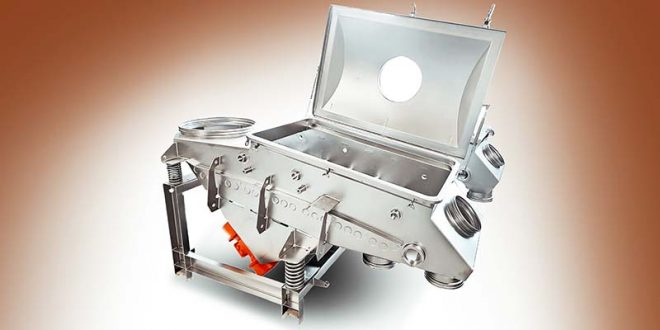GEA was recently awarded a license to use ViwateQ wet finishing to polish stainless steel surfaces at its vibratory equipment manufacturing plant in Svendborg, Denmark. It is currently the only manufacturer approved to use this method at their own production site. The ability to perform this finishing in-house reduces costs and manufacturing time, as well as improving the company’s environmental footprint. The process is required in particular by food, pet food, and pharmaceutical customers who need their equipment surfaces to be highly polished and hygienic.
ViwateQ finishing is an innovative surface treatment that is used to create highly polished, hygienic surfaces inside and out on stainless steel processing equipment. It is chemical-free and has zero impact on the environment. Although GEA has offered its customers ViwateQ treatment in the past, this has always involved transporting completed assemblies to an external supplier in The Netherlands. Thanks to this new license, GEA can perform the process itself in Denmark, reducing the need for transportation, enabling it to provide a faster service to customers, and providing its workforce with a better and more varied working environment.
Kasper Ege Scharff, Product Manager for Vibratory Equipment at GEA, explains that stainless steel finishing previously involved an acid pickling process and grinding, a time consuming and highly labor-intensive operation.
The alternative ViwateQ treatment is both gentler on the environment and achieves a better surface finish. “Being able to perform this process in-house significantly reduces our use of chemicals and road transport, improving our environmental footprint,” Kasper says. “It also allows us to speed up the manufacturing process, which is good for our customers. And our staff can alternate between traditional grinding operations and ViwateQ treatment, affording them greater variety at work. Which machine parts needs to be treated by ViwateQ depends on the application.”
ViwateQ removes all unwanted contaminants – including the burned weld area – from the surface of the stainless steel, leaving it extremely smooth. The treated surface minimizes the adhesion of dirt and bacteria, considerably reducing the risk of contamination as well as making cleaning quicker and more effective. Naturally sticky products are also easier to handle.







